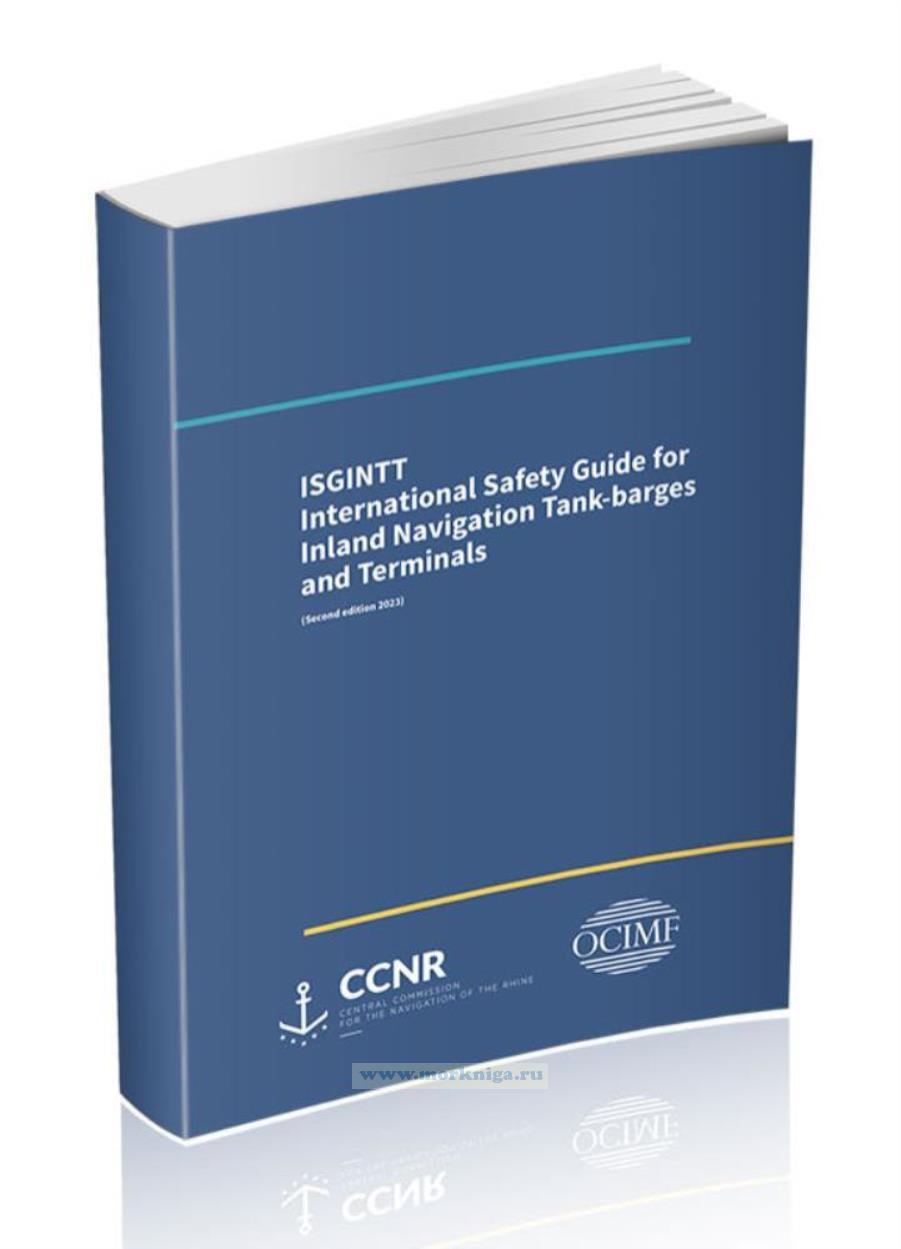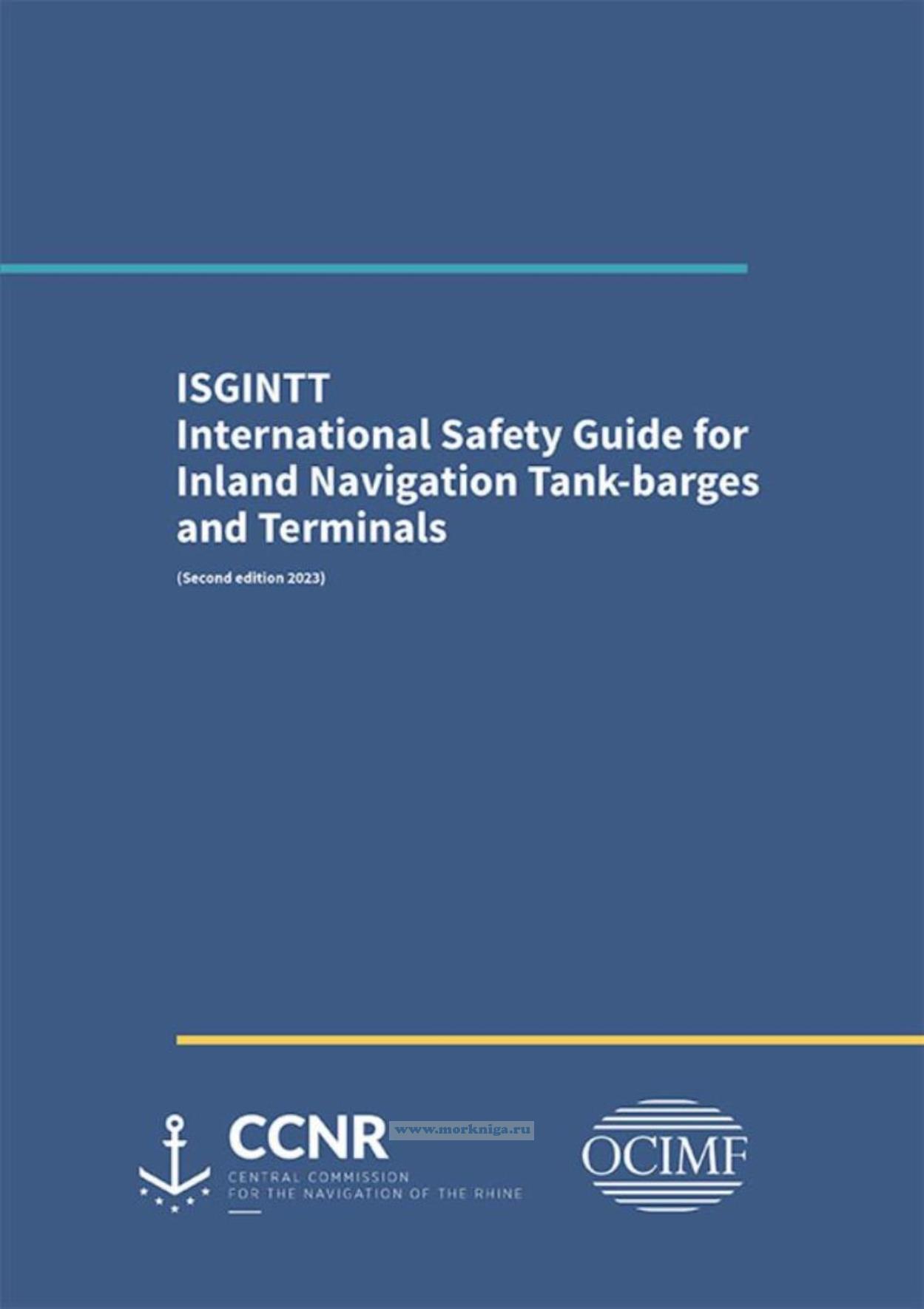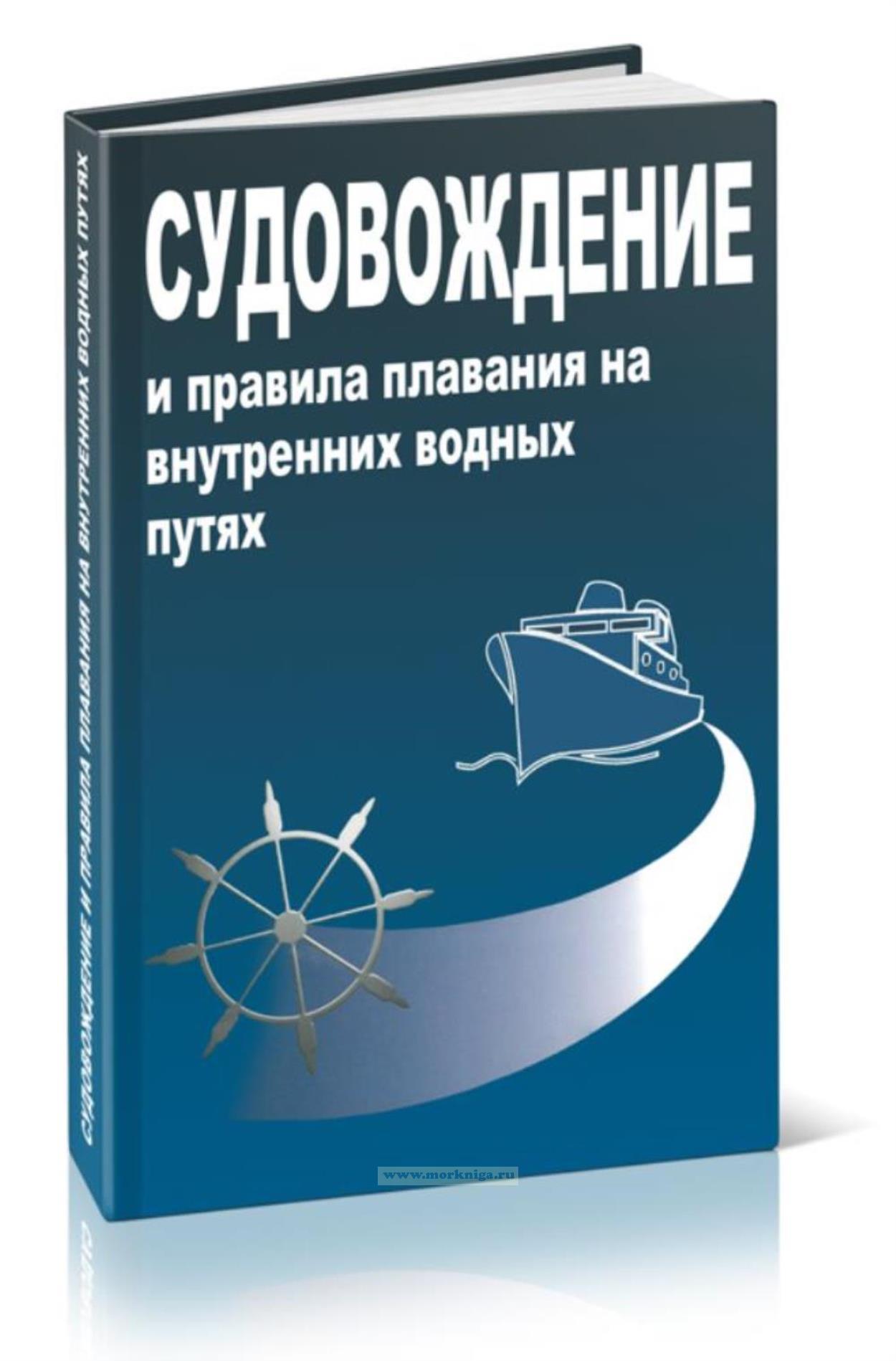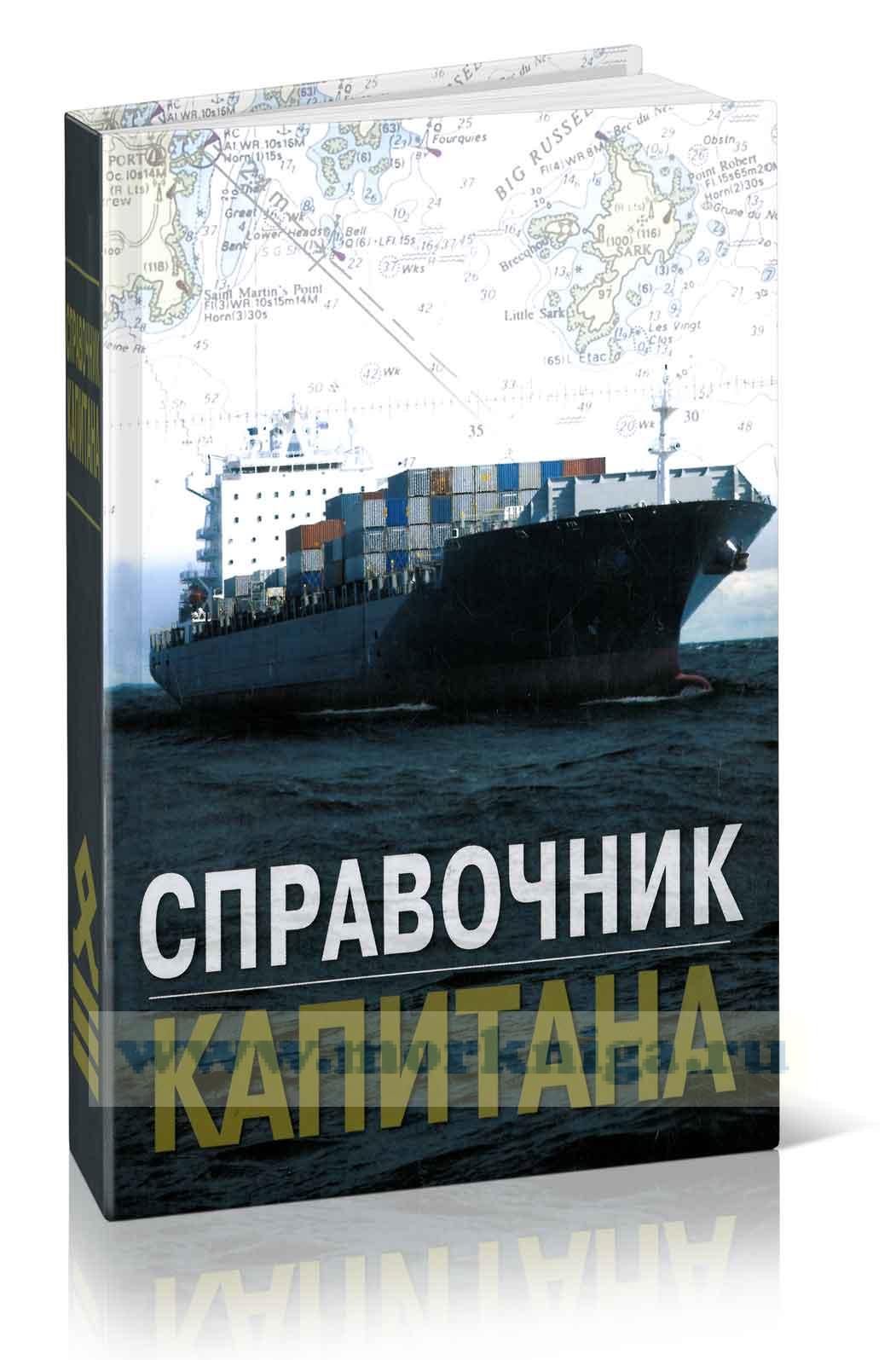International Safety Guide for Inland Navigation Tank-barges and Terminals (ISGINTT)/–Ь–µ–ґ–і—Г–љ–∞—А–Њ–і–љ–Њ–µ —А—Г–Ї–Њ–≤–Њ–і—Б—В–≤–Њ –њ–Њ –±–µ–Ј–Њ–њ–∞—Б–љ–Њ—Б—В–Є –і–ї—П —В–∞–љ–Ї–µ—А–Њ–≤ –≤–љ—Г—В—А–µ–љ–љ–µ–≥–Њ –њ–ї–∞–≤–∞–љ–Є—П –Є —В–µ—А–Љ–Є–љ–∞–ї–Њ–≤
–Ъ–љ–Є–≥–∞ –љ–∞ –∞–љ–≥–ї–Є–є—Б–Ї–Њ–Љ —П–Ј—Л–Ї–µ.
This guide provides updated safety practices on the operation of tank-barges and terminals and continues to embrace a risk-based control philosophy. By enhancing risk awareness, ISGINTT seeks to foster an environment where the uncertainties associated with some shipboard operations are reduced not solely by prescription, but also by encouraging barge and terminal crew, as well as their employers, to identify the risks in everything they are doing and to then implement fit-for-purpose risk reduction measures. This puts the focus on people and is, therefore, entirely consistent with a strategy related to the human element which has had increased focus in recent years.
The purpose of this guide is to improve safety of transport of dangerous goods at the interface of inland tank-barge with other vessels or shore facilities (terminals). The guide is not intended to create, to replace or to amend current legal requirements, but to provide additional guidelines that should not be part of legal requirements.
Contents
Foreword
Introduction
Purpose and scope
Bibliography
Definitions
Part 1: General Information
1 Basic properties of bulk liquids
1.1 Vapour pressure
1.2 Flammability
1.3 Density of hydrocarbon gases
1.4 Corrosiveness
2 Hazards of bulk liquids
2.1 Flammability
2.2 Density
2.3 Toxicity
2.4 Gas measurement
2.5 Product gas evolution and dispersion
2.6 N/A
2.7 The hazards associated with handling, storing and carrying residual fuel oil products
3 Static electricity
3.1 Principles of electrostatics
3.2 General precautions against electrostatic hazards
3.3 Other sources of electrostatic hazards
4 General hazards for inland tanker and terminal
4.1 General principles
4.2 Control of potential ignition sources
4.3 Portable electrical equipment
4.4 Management of electrical equipment and installations in dangerous areas
4.5 Use of tools
4.6 Equipment made of aluminium
4.7 Cathodic protection anodes in cargo tanks
4.8 Communications equipment
4.9 Spontaneous combustion
4.10 Auto-ignition
4.11 Asbestos
5 Fire-fighting
5.1 Theory of fire-fighting
5.2 Types of fire and appropriate extinguishing agents
5.3 Extinguishing agents
5.4 Fire detection systems
5.5 General precautions
6 Security
6.1 General
6.2 Security assessments
6.3 Responsibilities under the ISPS Code
6.4 Security plans in compliance with SOLAS and the ISPS Code
6.5 Security plans for inland tankers
6.6 Declaration of Security (DoS)
Part 2: Tanker Information
7 Shipboard systems
7.1 Fixed inert gas systems
7.2 Venting systems
7.3 Cargo and ballast systems
7.4 Power and propulsion systems
7.5 N/A
7.6 N/A
8 Ship’s equipment
8.1 Shipboard fire-fighting equipment
8.2 Gas testing equipment
8.3 Lifting equipment
9 Management of safety and emergencies
9.1 Safety Management Systems
9.2 Risk Management
9.3 Permit to work systems
9.4 Hot work
9.5 Welding and burning equipment
9.6 Other hazardous tasks
9.7 Management of contractors
9.8 Repairs at a facility other than a shipyard
9.9 Shipboard emergency management
10 Enclosed spaces
10.1 Introduction to enclosed space entry safety
10.2 Safety management for entering enclosed spaces
10.3 Identifying enclosed spaces
10.4 The hazards of enclosed space atmospheres
10.5 General precautions
10.6 Authorisation of entry
10.7 Requirements for enclosed space entry
10.8 Precautions during entry into enclosed spaces
10.9 Work in enclosed spaces
10.10 Entering enclosed spaces with atmospheres known or suspected to be unsafe
10.11 Rescue and evacuation from enclosed spaces
10.12 Respiratory Protective Equipment
11 Shipboard operations
11.1 Cargo operations
11.2 Stability, stress, trim and sloshing considerations
11.3 Tank cleaning
11.4 Gas-freeing
11.5 N/A
11.6 Ballast operations
11.7 Cargo leaks into double-hull tanks
11.8 Cargo measurement, ullaging, dipping and sampling
11.9 Transfers between vessels
12 Carriage and storage of hazardous materials
12.1 Liquefied gases
12.2 Tanker’s stores
12.3 Cargo and bunker samples
12.4 Other materials
12.5 Packaged cargoes
13 Human factors
13.1 General
13.2 Identification and analysis of Safety Critical Tasks
13.3 Design
13.4 Risk assessment
13.5 Procedures
13.6 Leadership
13.7 Confidence to stop work or speak up
13.8 Fatigue
13.9 Manning levels
13.10 Individual training, experience and competence
13.11 Practising team skills
13.12 Human factors in investigation and learning
14 Special ship types
Part 3: Terminal Information
15 Terminal management and information
15.1 Marine Terminal Information System
15.2 Hazard identification and risk management
15.3 Operating manual
15.4 Terminal information and port regulations
15.5 Supervision and control
15.6 Documentation
16 Terminal operations
16.1 Pre-arrival communications
16.2 Mooring
16.3 Limiting conditions for operations
16.4 Inland tanker/shore access
16.5 Double banking
16.6 Over-the-tide cargo operations
16.7 Operations where the inland tanker is not always afloat
16.8 Generation of pressure surges in pipelines
16.9 Assessment of pressure surges
16.10 Reduction of pressure surge hazard
16.11 Pipeline flow control as a static precaution
17 Terminal systems and equipment
17.1 Electrical equipment
17.2 Fendering
17.3 Lifting equipment
17.4 Lighting
17.5 Inland tanker/shore electrical isolation
17.6 Earthing and bonding practice in the terminal
17.7 Vigilance control (dead man’s switch)
18 Cargo transfer equipment
18.1 Marine Loading Arms
18.2 Cargo hoses
18.3 Vapour emission control systems
19 Safety and fire protection
19.1 Safety
19.2 Terminal fire protection
19.3 Alarm and signalling systems
19.4 Detection and alarm systems at terminals handling crude oil, petroleum and chemical products
19.5 Fire-fighting equipment
19.6 Water-borne fire-fighting equipment
19.7 Protective clothing
19.8 Access for fire-fighting services
20 Emergency preparedness
20.1 Overview
20.2 Terminal emergency planning - plan components and procedures
20.3 Definition and hierarchy of emergencies
20.4 Terminal emergency plan
20.5 Spill response
20.6 Emergency removal of inland tanker from berth
21 Emergency evacuation
21.1 General
21.2 Evacuation and personnel escape routes
21.3 N/A
21.4 Training and drills
Part 4: Management Of The Inland Tanker And Terminal Interface
22 Communications
22.1 Procedures and precautions
22.2 Pre-arrival exchange of information
22.3 Pre-berthing exchange of information
22.4 Pre-transfer exchange of information
22.5 Agreed loading plan
22.6 Agreed discharge plan
22.7 Agreement to carry out repairs
23 Mooring
23.1 Mooring safety
23.2 Security of moorings
23.3 Preparations for arrival
23.4 Mooring at jetty berths
23.5 N/A
24 Precautions on inland tankers and terminals during cargo handling
24.1 External openings in accommodation and engine rooms
24.2 Air conditioning and ventilation systems
24.3 Openings in cargo tanks
24.4 Inspection of inland tanker cargo tanks before loading
24.5 Segregated ballast tank lids
24.6 Inland tanker and shore cargo connections
24.7 Accidental product spills and leaks
24.8 Fire-fighting equipment
24.9 Proximity to other vessels
24.10 Notices
24.11 Manning requirements
24.12 Control of naked flames and other potential ignition sources
24.13 Control of vehicles and other equipment
24.14 N/A
25 Bunkering operations
25.1 General
25.2 Bunkering procedures
25.3 The bunkering operation
25.4 The bunkering safety checklist for bunker delivery to inland ships
26 Safety management
26.1 Climatic conditions
26.2 Personnel safety
26.3 The safety checklists
26.4 Guidelines for completing the inland tanker-shore safety checklists
26.5 Emergency actions
Part 5: Gas
27 Basic properties of liquefied gases
27.1 Liquefied gases
27.2 Liquefied gas production
27.3 Chemical structure of gases
27.4 Chemical properties
27.5 Inert gas and nitrogen
27.6 Polymerisation
27.7 Hydrate formation
27.8 Lubrication
27.9 Physical properties
27.10 States of matter
27.11 Principles of refrigeration
27.12 Critical temperatures and pressures
27.13 Liquid/vapour volume relationships
27.14 Ideal gas laws
27.15 Saturated vapour pressure
27.16 Liquid and vapour densities
27.17 Physical properties of gas mixtures
27.18 Bubble points and dew points for mixtures
27.19 Reliquefaction and enthalpy
27.20 Flammability
27.21 Suppression of flammability by inert gas
27.22 Sources of ignition
28 Hazards of gases
28.1 Cargo hazards
28.2 Flammability
28.3 Air deficiency
28.4 Frostbite
28.5 Chemical burns
28.6 Hazardous atmospheres
29 Static electricity
29.1 Electrostatics
30 Fire-fighting
30.1 The principal hazards
30.2 Liquefied gas fires
30.3 Liquefied gas fire-fighting
31 Shipboard systems
31.1 Cargo pipelines and valves
31.2 Cargo pumps
31.3 Cargo heaters
31.4 Cargo vaporisers
31.5 Cargo compressors and associated equipment
31.6 Inert gas and nitrogen systems
31.7 Electrical equipment in gas dangerous spaces
31.8 Instrumentation
32 Shipboard operations
32.1 Sequence of operations
32.2 Tank inspection, drying and inerting
32.3 Gassing-up
32.4 N/A
32.5 Loading
32.6 The loaded voyage
32.7 Discharging
32.8 The ballast voyage
32.9 Changing cargo (and preparation for drydock)
32.10 Ship-to-ship transfer
32.11 Conclusion
33 Types of gas carriers
33.1 Types of gas carriers
33.2 Cargo containment systems
33.3 Construction material and insulation
Appendix 1: Tanker-Shore Safety Checklist
Appendix 2: Seagoing*-Inland* Tanker/Inland Tanker Safety Checklist
Appendix 3: Hazardous Disposal Safety Checklist
Appendix 4: Non-Hazardous Disposal Safety Checklist
Appendix 5: Bunkering Safety Checklist for Bunker Delivery to Inland Ships
Appendix 6: Bunkering Safety Checklist for Bunker Delivery to Maritime Ships
Appendix 7: Guidelines for Completing the Safety Checklists


 –°—Г–і–Њ–≤–Њ–ґ–і–µ–љ–Є–µ –Є –њ—А–∞–≤–Є–ї–∞ –њ–ї–∞–≤–∞–љ–Є—П –љ–∞ –≤–љ—Г—В—А–µ–љ–љ–Є—Е –≤–Њ–і–љ—Л—Е –њ—Г—В—П—Е
–°—Г–і–Њ–≤–Њ–ґ–і–µ–љ–Є–µ –Є –њ—А–∞–≤–Є–ї–∞ –њ–ї–∞–≤–∞–љ–Є—П –љ–∞ –≤–љ—Г—В—А–µ–љ–љ–Є—Е –≤–Њ–і–љ—Л—Е –њ—Г—В—П—Е  –Э–∞–≤–Є–≥–∞—Ж–Є—П —Б –≠–Ъ–Э–Ш–°+CD
–Э–∞–≤–Є–≥–∞—Ж–Є—П —Б –≠–Ъ–Э–Ш–°+CD  –°–њ—А–∞–≤–Њ—З–љ–Є–Ї –Ї–∞–њ–Є—В–∞–љ–∞
–°–њ—А–∞–≤–Њ—З–љ–Є–Ї –Ї–∞–њ–Є—В–∞–љ–∞